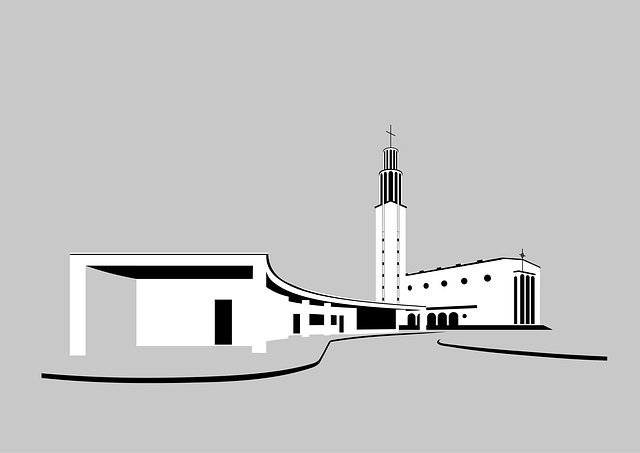Mastering Code-Compliant CAD Drafting for Architects

Architects using CAD drafting for code-compliant plans must master International Building Code (IBC)…….
In the realm of architecture and construction, Architectural Computer-Aided Design (CAD) Drafting has emerged as a pivotal process, revolutionizing how we design, plan, and visualize structures. This comprehensive article delves into the intricacies of Architectural CAD Drafting, exploring its role, impact, and future potential in shaping our built environment. From its technical foundations to global adoption, economic implications, and technological innovations, we aim to equip readers with a profound understanding of this dynamic field.
Definition and Core Components:
Architectural CAD Drafting is the practice of creating precise digital representations of buildings and architectural spaces using specialized software. It involves translating design concepts from two-dimensional (2D) sketches to three-dimensional (3D) models, incorporating structural, aesthetic, and functional considerations. The core components include:
2D Drafting: Creating detailed drawings such as floor plans, elevations, sections, and details, which form the basis of a project’s documentation.
3D Modeling: Developing three-dimensional models using software tools like Autodesk Revit, SketchUp, or ArchiCAD. This process allows for better visualization and analysis of the building design.
Building Information Modeling (BIM): An advanced approach where 3D models are accompanied by comprehensive data on materials, costs, schedules, and other project-related information. BIM facilitates collaboration and efficient project management.
Historical Context:
The origins of CAD drafting can be traced back to the late 20th century when computer technology started to transform traditional manual drafting methods. The early 1960s saw the introduction of the first CAD systems, primarily focused on 2D drafting for engineering and mechanical design. Over time, these systems evolved to include 3D modeling capabilities, making way for more complex architectural designs.
Significance:
Architectural CAD Drafting is pivotal in several ways:
International Influence:
Architectural CAD Drafting has transcended geographical boundaries, becoming a universal language in the architecture and construction industry. Its global impact is evident in several aspects:
| Region | Key Influences | Notable Adoption |
|---|---|---|
| North America | Early adoption of BIM and advanced CAD software | Leading in green building design with detailed energy modeling |
| Europe | Stricter building codes and standards | Advanced structural analysis tools for complex projects |
| Asia Pacific | Rapid urbanization and infrastructure development | Efficient land use planning and modular construction techniques |
| Middle East | Iconic architecture and massive construction projects | Use of BIM for project management and cost optimization |
Trends Shaping the Field:
BIM Integration: The seamless integration of BIM is a global trend, with many countries mandating its use in various construction projects.
Cloud-Based Collaboration: Cloud platforms enable real-time collaboration among remote teams, fostering efficient project management.
Sustainable Design: There is a growing emphasis on energy efficiency and sustainable building practices, with CAD software playing a crucial role in modeling and analyzing green designs.
Modular Construction: Off-site manufacturing and modular construction techniques are gaining traction, facilitated by detailed CAD models for precise assembly.
Market Dynamics:
The Architectural CAD Drafting market is dynamic and influenced by several factors:
Investment Patterns:
Economic Impact:
Innovations in Architectural CAD:
Cloud Computing: Cloud-based CAD platforms offer remote access, collaboration, and data storage, enhancing productivity and security.
Virtual Reality (VR) and Augmented Reality (AR): These technologies provide immersive experiences for visualizing designs, helping clients make informed decisions.
Artificial Intelligence (AI): AI algorithms can automate certain drafting tasks, improve design efficiency, and enhance material selection based on project requirements.
Machine Learning: Predictive analytics can optimize structural design, energy performance, and cost estimation, ensuring better project outcomes.
Impact on the Field:
High-Rise Residential Tower (New York, USA):
A leading architecture firm utilized BIM for a 50-story residential tower, enabling seamless collaboration among architects, engineers, and contractors. The detailed 3D model facilitated design optimization, clash detection, and energy analysis, resulting in a highly efficient and sustainable structure.
Green School Campus (Bali, Indonesia):
A sustainable education campus was designed using advanced CAD software with a focus on natural ventilation and lighting. The models enabled precise construction planning and modular building techniques, ensuring a cost-effective and eco-friendly facility.
Overcoming Implementation Barriers:
Future Trends and Predictions:
Architectural CAD Drafting is a dynamic field that continues to shape the built environment through innovation and precision. With global adoption, technological advancements, and growing economic investments, its impact will only intensify in the years to come. As the industry navigates challenges and embraces emerging trends, the future promises exciting possibilities for architects, engineers, and construction professionals alike.

Architects using CAD drafting for code-compliant plans must master International Building Code (IBC)…….

CAD drafting is essential for urban planning and infrastructure development, generating precise 2D/3…….

Residential CAD drafting is a versatile and powerful tool for architects and designers, enabling pre…….

Load analysis, crucial for structural design integrity, relies on 2D and 3D CAD drafting services to…….

Residential CAD drafting is a crucial tool for housing projects, offering detailed site plans that i…….

CAD drafting for architects has revolutionized design, enabling precise 2D-3D conversions from tradi…….

Load analysis through 2D and 3D CAD drafting services is crucial for structural design integrity. Pr…….

Modular and prefab construction methods revolutionize building with efficient, standardized techniqu…….

CAD drafting for architects transforms traditional as-built drawings into digital blueprints, enhanc…….